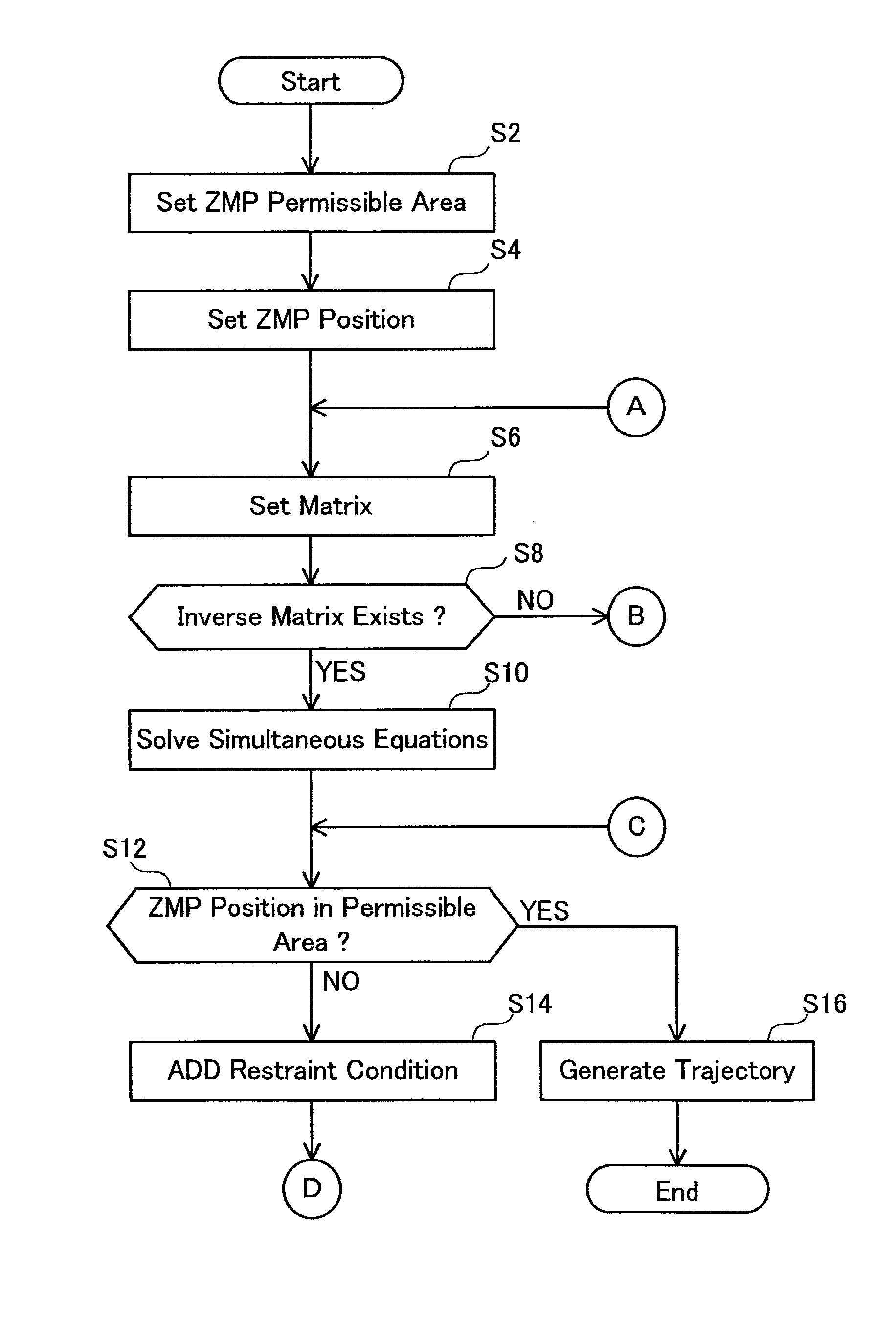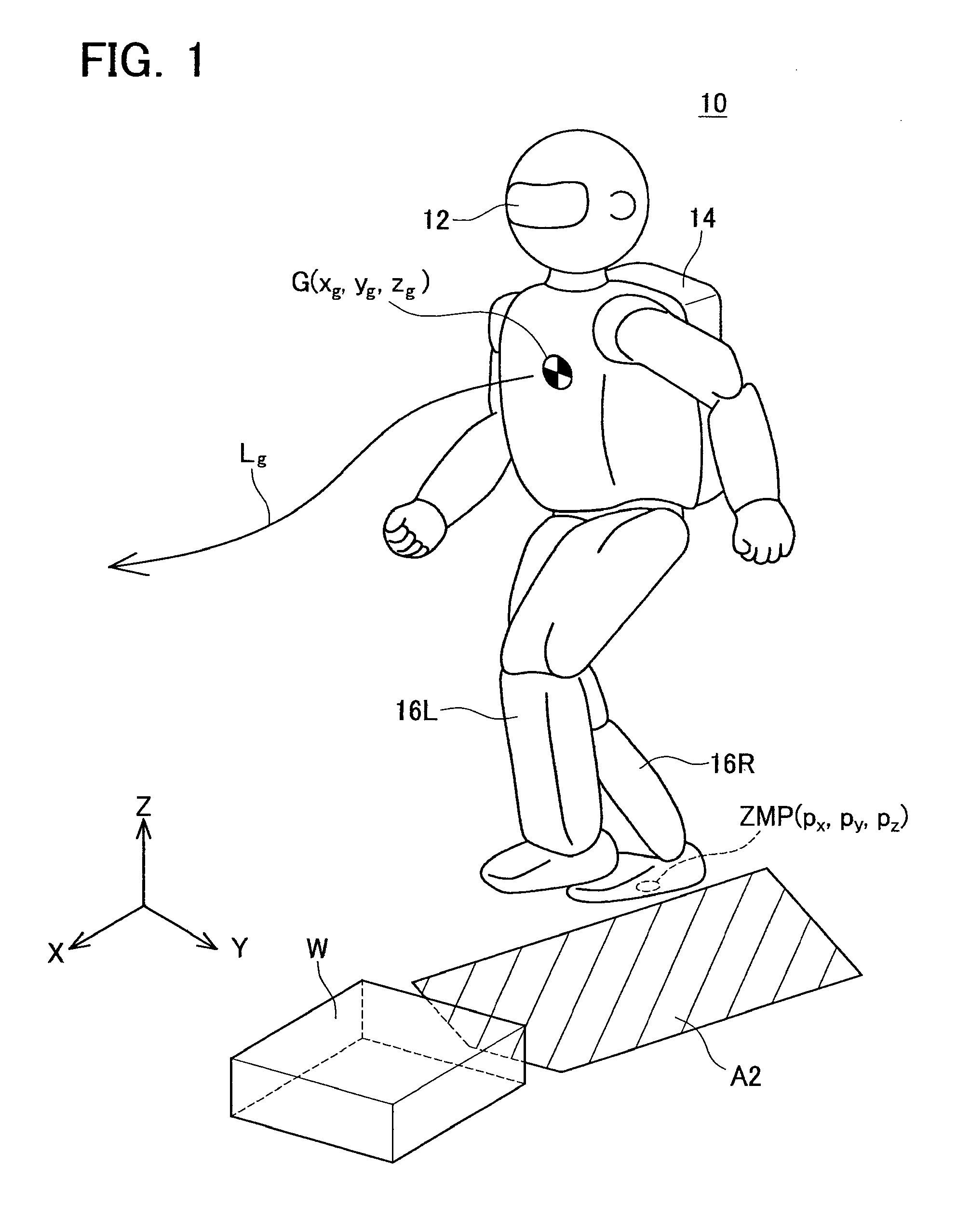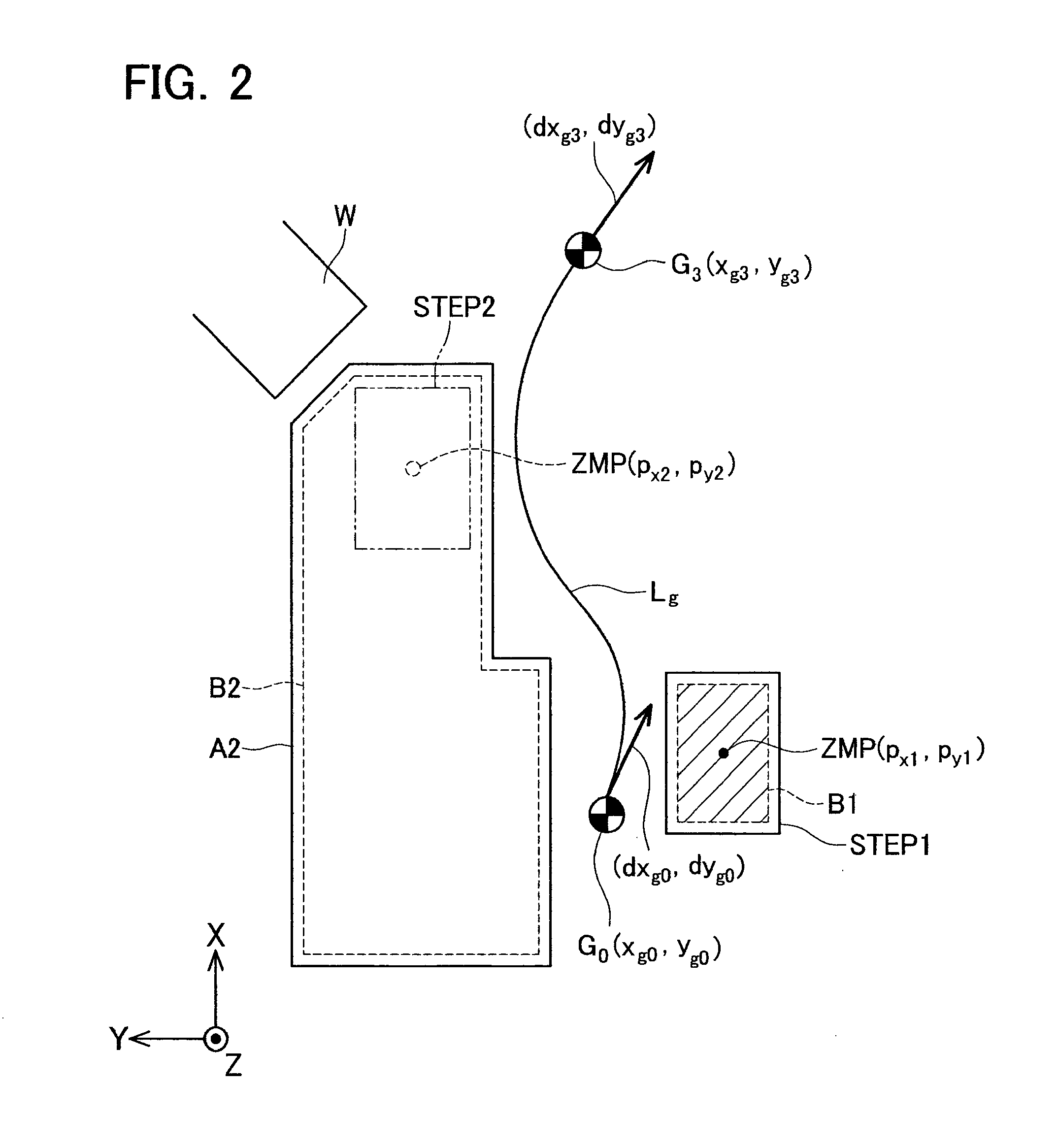Biped walking robot
a walking robot and robot technology, applied in the field of walking robots, can solve the problems of not being able to establish the technology of adjusting the grounding timing under the restriction of ensuring walking stability, and achieve the effects of increasing walking stability, avoiding falling, and increasing walking stability
- Summary
- Abstract
- Description
- Claims
- Application Information
AI Technical Summary
Benefits of technology
Problems solved by technology
Method used
Image
Examples
Embodiment Construction
[0023]Before describing embodiments, some of the technical features of a biped walking robot in the embodiments will be described. The basic technique for solving a ZMP equation by setting boundary conditions at a start point and an end point of a trajectory of a center of gravity is disclosed in Japanese Patent Application Publication No. 2004-167676, to which reference is made herewith. A possible grounding area is defined on a basis of a movable range of a leg of the biped walking robot, provided that a ground surface is flat. If there is an obstacle on the ground surface, then the possible grounding area is set to an area outside the obstacle and in the movable range of the leg.
[0024]The method described herein typically defines a grounding position and a grounding timing of one next walking step. A case in which the second leg ZMP position calculated on the basis of a ZMP equation under a given grounding timing is located out of the second leg ZMP permissible area corresponds t...
PUM
 Login to View More
Login to View More Abstract
Description
Claims
Application Information
 Login to View More
Login to View More - R&D
- Intellectual Property
- Life Sciences
- Materials
- Tech Scout
- Unparalleled Data Quality
- Higher Quality Content
- 60% Fewer Hallucinations
Browse by: Latest US Patents, China's latest patents, Technical Efficacy Thesaurus, Application Domain, Technology Topic, Popular Technical Reports.
© 2025 PatSnap. All rights reserved.Legal|Privacy policy|Modern Slavery Act Transparency Statement|Sitemap|About US| Contact US: help@patsnap.com



